THE MYSTERIOUS KNIGHTS TEMPLARS AND THE ORIGINS OF THE MARAIS DISTRICT –
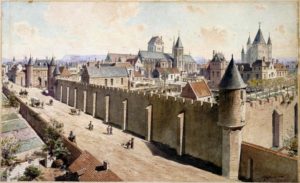
This district of Paris is one of the most historic and fascinating in the city. Nowadays, it’s known for hip boutiques, quirky art galleries, great cafes, restaurants and fresh food, a couple of delightful squares, and some of the best museums in the city. Although its origins were far from auspicious, it’s a place we always head to for all these attractions and much more. It’s an enticing melange of ancient and traditional plus contemporary and slightly quirky, making it one of the most interesting areas in Paris.
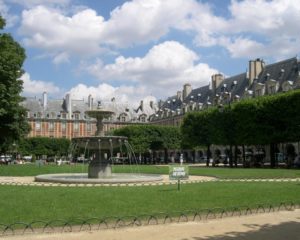
During the Middle Ages, this area on the Right Bank of Paris was swampy marsh land divided into many small parcels, narrow houses tightly packed one against the other, with their tiny, barely-viable fields producing vegetables for the city. The original marshland was the remnant of an ancient branch of the Seine that had once flowed down from the heights of Belleville, east of Paris. The name Le Marais, literally The Swamp or Marsh, has remained to this day, and now comprises the 3rd and 4th arrondissements.

The Knights Templar, the “founding fathers” of the 3rd arrondissement, were originally an elite French military order formed in the Holy Land from around 1118AD, set up for the protection of Christian pilgrims. After the collapse of the Christian Kingdom, they retreated to Cyprus, and from there, spread out across Europe. Their great wealth, mostly obtained through gifts bestowed on the order by grateful Christian pilgrims, enabled them to acquire vast estates and lands, which accelerated the process. Louis VII donated land to the Knights in 1139, close to today’s Hotel de Ville, comprising the Marais swamplands, who set about draining and improving the land to make it arable. The Knights were following the example of the monks of Saint Martin des Champs who had dried up the swamps on the western fringe of the city a century earlier. Having redeemed and improved the land through their sophisticated agricultural methods, the Knights moved to its north-eastern edge, where they built a fortified compound, l‘Enclos du Temple, which also served as their European headquarters.
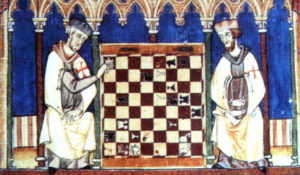
The Knights’ considerable business acumen, their geographical dispersion, and the granting of a Papal Bull that gave the order extraordinary protections including an exemption from paying taxes or tithes anywhere in the world, all contributed to the continual increase of their wealth. This, and their independence, were jealously kept behind the crenellated walls of the Enclos du Temple, roughly on the site of today’s rue du Temple, rue de Bretagne, rue de Picardie and rue Béranger south of Place de la République. The Enclos was complete with 10m high crenellated walls reinforced by turrets and watch towers, a church, vast stables, residences for the Knights, and a drawbridge that led to the Temple’s only gate (now the corner of rue des Fontaines-du-Temple and rue du Temple).

The kings of France were happy with the whole set-up of the Knights Templars, until the early 14th century. Philip Augustus even entrusted some of his treasures to the Knights in 1190 before embarking on the Third Crusade, but Philip the Fair, an ambitious king, could not tolerate this wealthy state within his state—probably because he himself was in chronic financial straits. During a mass uprising in 1306, Philip accepted the Templars’ kind offer of shelter, and was staggered by the stupendous wealth of the order. Consumed with envy, he set out to contrive their downfall by spreading treacherous rumours and slanders against them.
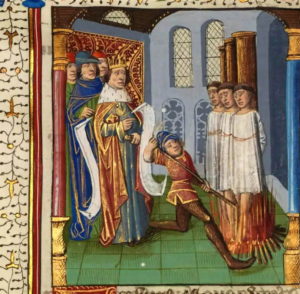
After hideous trials, humiliations, false accusations of blasphemy, devil worship and idolatry, followed by torture and the burning of 54 Templars at the stake, the French branch of the Order was disbanded in 1313. The crown seized their possessions, and to add insult to injury, these were handed over to a rival order of Hospitalers who had also been founded in the Holy Land to welcome and assist pilgrims to Jerusalem. They stayed at the Enclos du Temple until the Revolution, and were disbanded by Napoleon in the early 19th century.
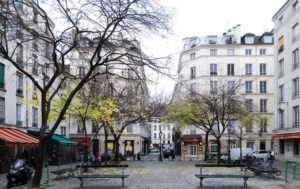
The Enclos du Temple had turned this district into an attractive area, which became known as the Temple Quarter, and many religious institutions were built nearby: the Blancs-Manteaux de Saint-Croix-de-la-Bretonnerie and Carmes-Billettes convents, as well as the church of Sainte-Catherine-du-Val-des-Écoliers. During the 17th century, the Marais flourished as the aristocratic neighbourhood of Paris. The palace of the Grand Prior of the Temple (built on the corner of rue de Bretagne and rue du Temple) became the court of the illegitimate sons of royalty, and was notorious for debauchery, yet also of literary and artistic brilliance.
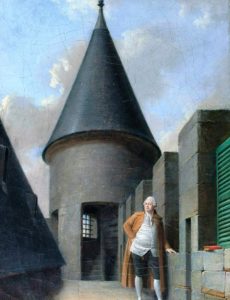
In August 1792, the royal family and their retinue became prisoners of the Commune de Paris. The King was kept at the Temple until his execution on 21 January 1793. It was from here this his tumbril left for the guillotine on Place de la Révolution (now Place de la Concorde).
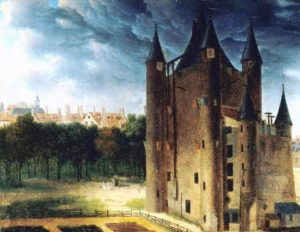
Napoleon prudently razed the Temple Tower to the ground, as the Royalists had made it their shrine. The original Romanesque church and its churchyard were also demolished shortly afterwards. Only the palace of the Grand Prior was still standing. Used by the Ministry of Religion at the time of Napoleon, as a convent during the Restoration, and as a military barracks during the Second Republic, it too was torn down by Napoleon III in 1853, as part of Baron Haussmann’s project for a new Paris.
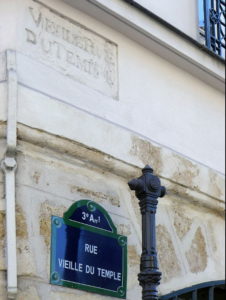
Paris has preserved the memory of the Knights Templar in many place names of the neighbourhood: Square du Temple, bvd. du Temple, rue Vieille-du-Temple, rue des Fontaines-du-Temple, Carreau du Temple, rue du Temple and so forth.
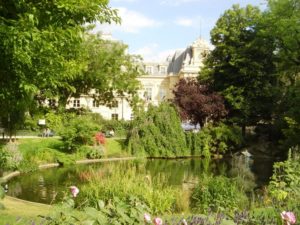
The Square du Temple today is a peaceful, verdant, grassy space shaded by leafy trees, and a favourite with Parisians to partake of one of their favourite pass-times, even more beloved than people-watching: the mid-afternoon aperitif al fresco. What most don’t realise however is that this idyllic park is built right over the ruins of the Knights Templar’s l’Enclos du Temple. Although nothing remains of that enormous compound, you can still see traces of the Knights’ presence throughout the district.
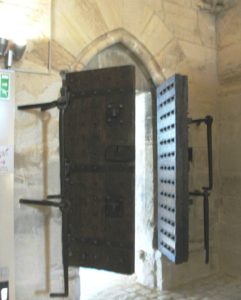
No. 158, rue du Temple is where the grand entrance to the Enclos once stood, and rumour has it that in the basement of 32 rue de Picardie, now the chic restaurant Les Chouettes, the remnants of a corner tower can still be seen. True Templar enthusiasts can take a trip to the Château de Vincennes, at the end of metro Line 1, where the enormous, heavy gates of the Grosse Tour from the Enclos du Temple are now kept.
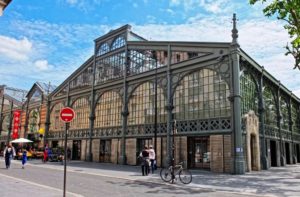
On the edge of Square du Temple is a covered market building called the Carreau du Temple, built in 1863. In 2007, while the structure was undergoing renovations and repairs, the remains of a Templar cemetery were unearthed, along with the skeletons of knights who had died in France.
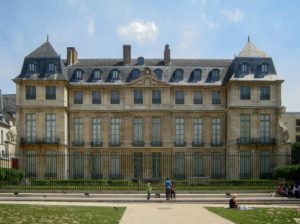
Many private mansions (Hôtels Particuliers) were built in the neighbourhood during the 17th century, and a number of these are now listed Monuments Historiques. Some of these include the Hôtels de Sully and de Soubise, not to mention Hôtel Salé, a magnificent building once frequented by the writer Honoré de Balzac and now home to the Picasso museum, which is always on our check list before visiting Paris to see what’s on.
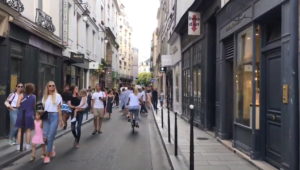
The “Temples” district, notably Rue Vieille Du Temple, Rue du Temple and Rue Charlot, has some of the best shopping in Paris, and many major fashion brands have branches here including Uniqlo, COS, The Kooples and Scotch & Soda, and Karl Lagerfeld recently opened a women’s and menswear boutique at 25 Rue Vieille du Temple.
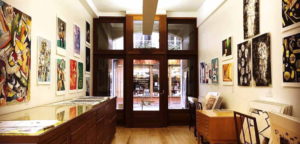
Art lovers shouldn’t miss Atelier Clot at no. 19 rue Vieille-du-Temple, where you will find Paris’ oldest lithographic workshop, that has been printing lithographs with the greatest artists of the time since 1896, from Renoir to Rodin, and today they continue to draw top international contemporary artists. In the workshop’s gallery you can find original prints made in the workshop over the last 125 years.
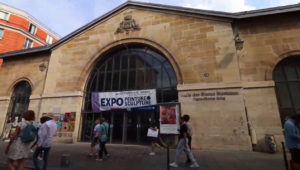
If it’s open, pop into the Halle des Blancs Manteaux, a lovely, stone former market hall, but originally a convent, at n0. 48 rue Vieille-du-Temple which is now an exhibition space that often has interesting exhibitions with works for sale.
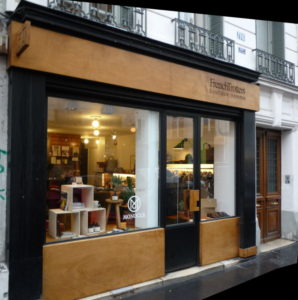
This vibrant street is full of great fashion, and most especially labels you possibly might not have heard of. FrenchTrotters at 128 has a really great range of both women’s and men’s fashion from labels including Comme des Garçons, Engineered Garments, Bank of Outsiders, Alden, Yuketen, among others, as well as their own label which is entirely made in Paris. They also have a range of shoes, bags, cosmetics and home décor items.

At 135 rue Vieille du Temple you’ll find a terrific menswear boutique called Elevation, who keep some of the best fashion labels around, such as Transit Uomo, Fujito, Barena Venezia and Aviatic. New to Paris, at no. 118 is Ganni, one of the hottest Danish womenswear labels, that just opened a couple of months ago. One of my must-visit boutiques in Paris is Oska, that I’ve recommended numerous times before. It used to be next door to Elevation at no. 133 but has relocated to 106 rue de Turenne, which fortunately is only 5 mins. walk from their old space in rue Vieille du Temple. There are far too many great boutiques in this street to mention here. Suffice to say, it’s worth a stroll to discover them for yourself.
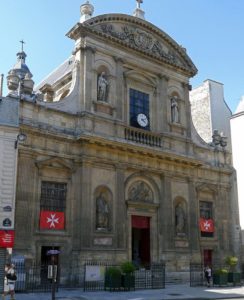
Rue du Temple runs down from Place de la République, and becomes more interesting once past metro Temple and the Monoprix store. Opposite, have a look inside the magnificent baroque church of Sainte Elisabeth of Hungary, built in 1628, that once faced the Enclos du Temple. It’s known especially for its recitals and concerts of the great Baroque composers, enhanced by the church’s incredible acoustics.

Originally built for a community of Franciscan nuns called Dames de Ste Elisabeth, it became a parish church in the early 19th century and convent church of the Sovereign Order of Malta from 1938. In addition, Jews were hidden there during WW2. There are several paintings throughout the church that feature depictions of the imposing Enclos that was once opposite.

The street narrows after the Square du Temple, and from here on, heading towards the Hotel de Ville, is where you’ll discover all sorts of interesting little boutiques, jewellery suppliers and makers, cafes and shops. Note though that many of these are wholesale showrooms, so officially aren’t supposed to sell to the public. My experience is that this rule is somewhat flexible, and if you see something in the window that catches your eye, it’s worth tapping on the door if it’s shut, or simply walk in and enquire if they will sell one-offs i.e., you’re not after “en gros” (wholesale quantities).
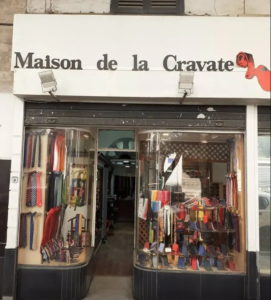
Some of the small shops I like to check out include La Maison de la Cravate at no. 140 that has a great selection of very pretty scarves, shawls and yes, ties. They specialise in made to order ties, choosing just what you want from their beautiful range of fabrics including pure silks. Ormont at no. 141 sells bags and other fashion accessories and is worth a quick look. If you’re on the look-out for a good raincoat, jacket, or waterproof bags of all sizes, for both women and men, the very place to aim for is, appropriately, Rains at no. 78. This shop puts an entirely different spin on the concept of “rain gear”.
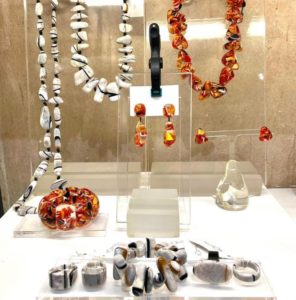
One of my top favourite shops in Paris is Sobral jewellery. They have a terrific boutique on the Isle St Louis, but this during the COVID lockdowns, although it has now re-opened. Their showroom and retail store are at no. 76 rue du Temple. Sobral is designed by a Brazilian, everything is made from resin, very stylish, wonderful colours, modern and reasonably affordable.
Further down the
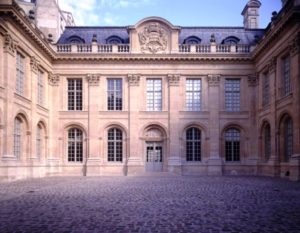
street, on the corner of rue de Braque, at no. 68, you’ll come across a very odd-sounding shop, called The Odder Side. They stock their own label of easy sportswear, activewear, and easy separates, all made from responsibly-sourced fabrics. Check out their overshirts, t-shirts, and kimono tops that seem to go with everything. By this time, you’ve reached the Museum of the Art and History of Judaism at no. 71. Housed in the former Hôtel de Saint-Aignan, the museum aims to convey the rich history and culture of Jews in Europe and North Africa from the Middle Ages to the 20th century.
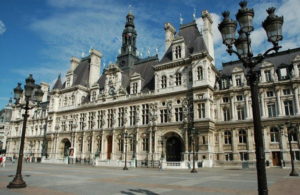
By now, you’ve gone past rue Rambuteau, the Centre Pompidou is just around the corner, and you’re within a few minutes of the Hotel de Ville. You will have strolled past yet more interesting little boutiques and businesses, and perhaps have whiled away some time relaxing in one of the many cafes and bistros.
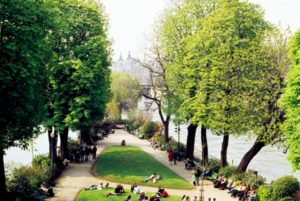
If you find yourself on the Île de la Cité, there is a small park, the Square du Vert-Galant, right at the tip of the island, at the Pont Neuf end looking across to the Louvre. It’s a quiet, peaceful spot where Parisians and visitors come to picnic and relax. However, on 18 March 1314, it looked more like a scene from a horror film, because on that day, after several years of imprisonment, the Grand Master of the Knights Templar, Jacques de Molay, was burned at the stake.
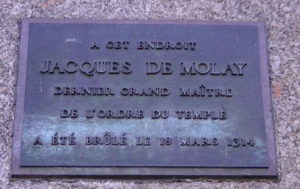
There is a small plaque at the entrance into the park that reads ‘In this spot, Jacques de Molay, the last Grand Master of the Order of the Templars, was burned.’ It is said that as he died, de Molay cursed Pope Clement V and King Philip the Fair and all his descendants. He proclaimed that within a year both Philip and Clement would die, and that the king’s bloodline would no longer rule France. The 2 men did in fact die that year, and in the 14 years that followed, all King Philip’s heirs perished, effectively destroying the bloodline that had ruled France for over 3 centuries.
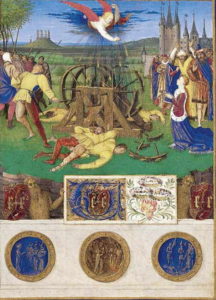
The legacy of the Knights Templars is not easy to discern from today’s Paris, yet there are small signs and subtle hints still in evidence, if you know where and how, to look.
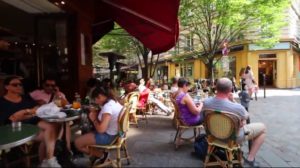


As always, totally fascinating.
Hi Nadine,
Yes, it’s an area where it’s true to say that what you see today seems to reveal little of its colourful, sometimes very violent past, but scratch beneath the surface and there’s a lot to discover.
Cheers, Cheryl
Great history of Le Marais Cheryl.
It is such an amazing area where no matter how many times one has visited there is always more to find.
Merci beaucoup
Pam
Bonjour Pam,
Since researching this story, I’ve been in and out of the Marais quite a bit recently, and its often murky past seems hard to believe when looking at today’s Marais, but there is in fact lots to see if you know where to look. Which is exactly what keeps us going back so often!
Glad you enjoyed it! Cheryl
Very interesting, I’ve always found the Templar’s fascinating.
Where do you find your research?
Love the Marais, thank you for your wonderful pieces.
Hi Diane,
Great to hear from you, and so delighted you enjoyed this story. The Templars is a fascinating subject, and I too have had a long fascination with them. As tourists, we’ve tracked them down in Rhodes and Malta–both have wonderful Knights Templars castles, fortresses etc., especially Malta–and of course here in Paris, where we are at the moment. I do a lot of research on all my topics, as you’ve kindly observed, and I must say, I am a good researcher, which I guess is mostly a result of having an MA in Classics and Ancient History. As Graham says, thanks to that, I’m still a pretty good “ferret”! I investigate lots of sources, anything from local history organisations, academic papers (although not too many of these, as they tend to be too detailed and focussed on impressing other academics!), both in English and French if I’m dealing with a French topic, or Italian if it’s Italy (although that’s something of a last resort, dredging up my once-reasonable Italian!), and I very rarely read other people’s blogs as I’ve often found their information and basic facts are incorrect, trivial and out-of-date. And of course, I draw a lot on my own personal experience of the city, region, site etc. Luckily, I love doing it, and I’m glad you enjoy it too.